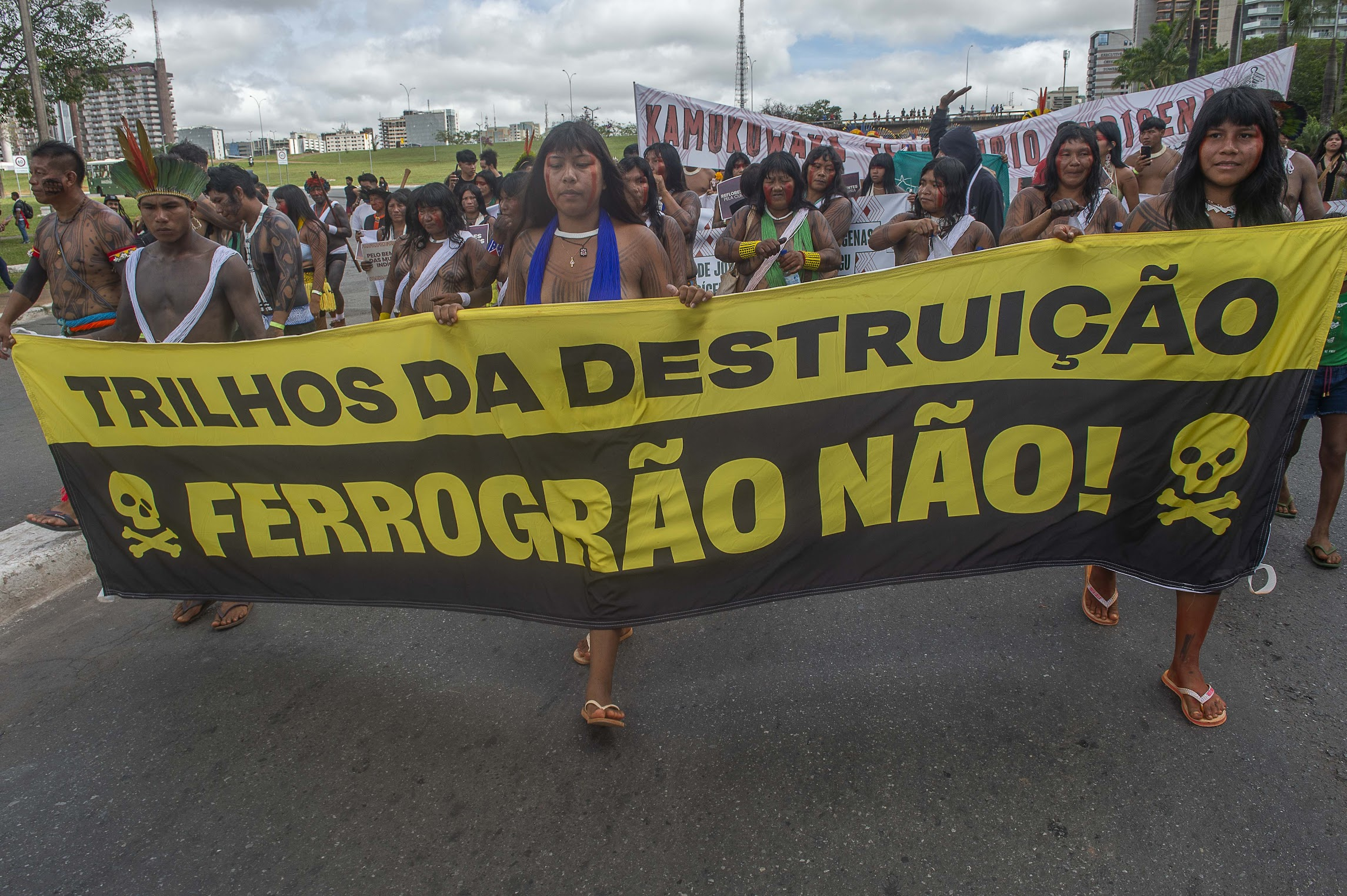News
High-Risk Rail: Why Wall Street Should Be Wary of Ferrogrão

The Ferrogrão railway — a proposed 933-kilometre freight corridor through the Brazilian Amazon — is a key example of how infrastructure projects can entrench high-risk extractive practices. The project is backed by soy giants, Amaggi, Archer Daniel Midlands (ADM), Bunge, Cargill and Louis Dreyfus (LDC) which intend to increase grain exports through the Amazon.1 These traders received over USD 5 billion in tropical forest-risk credit between 2020 and mid-2024, with over a quarter coming from Citi, Bank of America and JPMorgan Chase.
A recent independent review by GT Infra, a coalition of Brazilian researchers and civil society organizations, paints a troubling picture of the project. Ferrogrão is financially unsound, legally fragile, and socially and environmentally harmful.The Climate Policy Initiative estimated that its construction could cause about 2,043 square kilometres of deforestation in the state of Mato Grosso alone, contributing approximately 75 million tonnes in carbon emissions.
Infrastructure as a Vehicle for Land Grabbing
Ferrogrão would cut through Jamanxim National Park, a federally protected area in the Amazon, in a move which is currently being challenged in Brazil’s Supreme Court. More broadly, the railway crosses regions in the Tapajós-Xingu corridor where Indigenous communities are defending their lands amid intensifying land conflicts.
GT Infra warns that the project risks legitimizing illegal land grabs (grilagem) by enabling infrastructure to formalize irregular land occupation. Rather than serving the public interest, Ferrogrão facilitates territorial capture for agribusiness expansion—eroding hard-won protections and deepening legal uncertainty.
Privatizing Profits, Socializing Risks
Despite claims of profitability, a 2024 review by Amazônia 2030 and economist Cláudio Frischtak found that Ferrogrão’s internal rate of return is just 1.6% – well below the minimum threshold for viable private-sector investment. To proceed, it would require up to R$32.5 billion (USD 6.5 billion) in public funds, amounting to 90% of its total cost. The result: private exporters profit, while the public shoulders the financial burden.
For banks financing the agribusiness firms that would benefit from Ferrogrão, the short-term returns may look appealing, but the long-term risks are substantial. Backing a project that fuels deforestation, violates Indigenous rights, escalates territorial conflict, and undermines climate, nature and development goals could expose financial institutions to financial risk through regulatory action and reputational damage. Worsening climate change — exacerbated by Amazon deforestation — also threatens to disrupt the very agricultural supply chains these banks finance. Declining climate stability can significantly reduce future harvest productivity, directly impacting agribusiness profits and investor returns.
A Model of Extractive Finance
The project’s goal is clear: enable expansion for agribusiness giants with poor environmental and human rights records. Bunge, and Cargill, key supporters of Ferrogrão, have well-documented links to deforestation and rights abuses in their supply chains. Yet, despite these concerns, Wall Street banks continue to finance these companies without having established robust frameworks to mitigate and avoid associated harms.
Table 1. Tropical forest-risk credit to Ferrogrão traders and bank policy scores.
| Bank name | Credit January 2020 – June 2024 (USD Millions) | Policy Score (out of 10) | ||||
| ADM | Amaggi | Bunge | Cargill | LDC | ||
| Bank of America | 276 | 20 | 120 | 2 | 2.2 | |
| Citi | 257 | 32 | 67 | 120 | 7 | 3.7 |
| JPMorgan Chase | 224 | 32 | 47 | 101 | 1 | 1.5 |
This financing does not incentivize reform. It entrenches a model of profit extraction that externalizes environmental and social harm, fueling the very risks banks claim to mitigate and responsibly manage through environmental, social and governance frameworks.
A Credibility Test for Global Finance
Ferrogrão is more than a flawed infrastructure proposal, it is a litmus test for financial institutions’ commitment to climate, Indigenous rights, and sustainable development. With Brazil set to host COP30, the railway risks becoming a global emblem of hypocrisy: marketed as green, but driving large-scale deforestation, rooted in land grabbing and deregulation. As pressure mounts from civil society, regulators, and consumers, banks must choose: continue enabling this model, or demonstrate meaningful alignment with public demands.
The Message is Clear: Exit Now
Ferrogrão poses high risks to Brazil’s forests and communities. International financiers must take a clear stance. We call on global banks and investors to:
- Suspend financing to Cargill, Bunge, and other companies involved in Ferrogrão until full environmental, legal, and territorial due diligence is publicly disclosed;
- Withdraw support for infrastructure projects that impact Indigenous lands, drive deforestation in the Amazon or violate Brazil’s constitutional protections;
- Adopt strong “No deforestation or conversion, No Peatlands, No Exploitation” policies and require clients to demonstrate full traceability through independent verification.
References:
- See also: Brent Millikan (2023), Centro de Estudos em Sustentabilidade da Fundação Getulio Vargas (FGVces), Instituições financeiras e gestão de riscos socioambientais e grandes projetos de logística e transporte [recurso eletrônico] : o caso da Ferrogrão (EF-170); Wion and Kuepper et al. (2024), European Commission AGRI Committee, The Role of Commodity Traders in Shaping Agricultural Markets. ↩︎